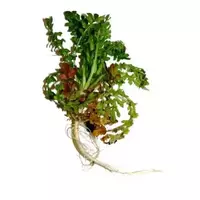Herb shepherd's bag

Herb shepherd's bag refers to annual crops. Outwardly, it is a single erect stem with basal leaves forming a rosette. The small white flowers of the shepherd's bag are collected in elongated brushes, and they bloom gradually, which is why buds bloated along with ripe fruits can be seen on one brush. The fruits of the shepherd's bag - triangular pods, in shape very similar to the bags with which shepherds graze animals - are precisely from this plant and acquired its name.
Herb shepherd's bag is able to grow in almost every corner of our planet. The only places where it is impossible to meet it are the territory of the Far North and the southern arid areas. Interestingly, a shepherd's bag in the form of a weed can be seen in gardens and gardens. In addition, this plant is characteristic of pastures, roads, skylights and wastelands.
Perhaps for some it will seem strange, but the herb shepherd's bag is quite widely used in cooking. So, young leaves of the plant are usually added to vinaigrettes and other salads, used as part of side dishes, mash, borscht and soups. Based on the dried herb of a shepherd's bag, you can get an original dressing suitable for the first courses.
The property of a shepherd's bag in fresh form is excellent in combination with celery can be used in the preparation of vitamin paste, which, as a rule, is spread on bread. The dried seeds of the plant are quite savoury in taste, so they can be replaced by mustard or pepper. In addition, it is not uncommon to make pie fillings from young leaves, old greens can be added to vegetable broth, which will make it more saturated.
Composition of the shepherd's bag
The composition of the shepherd's bag includes organic acids, coumarins, alkaloids, vitamins, macro- and trace elements, as well as other useful substances. As you know, this grass is even able to secrete phytoncides, and the seeds of a shepherd's bag are rich in fatty oil, similar to mustard, which is contained up to 28 percent.
In addition, resins, potassium, saponins, flavonoids and peptides were found in the shepherd's bag. Moreover, it is the latter compounds that are responsible for the hemostatic properties of the shepherd's bag.
The benefits of a shepherd's bag
In medical practice, the benefits of a shepherd's bag have been known for a long time - even ancient Roman and ancient Greek medicines successfully used these plants to stop bleeding. In modern medicine, the shepherd's bag also takes not the last place - with the help of this wonderful plant, various gastrointestinal disorders and hypertension are treated.
In addition, the benefits of a shepherd's bag are relevant thanks to its diuretic and antipyretic effects. This grass is shown to people with metabolic disorders due to the content of a large amount of minerals.
herb shepherd's bag 0 kCal
The energy value of herb shepherd's bag (Ratio of proteins, fats, carbohydrates - ju):
Proteins: 0 g (~ 0 kCal)
Fats: 0 g (~ 0 kCal)
Carbohydrates: 0 g (~ 0 kCal)
 Español
Español Français
Français Português
Português Русский
Русский 简体中文
简体中文 繁體中文
繁體中文 日本語
日本語 한국어
한국어 العربية
العربية Türkçe
Türkçe Қазақ
Қазақ Deutsch
Deutsch Italiano
Italiano Українська
Українська
